 Features
Features
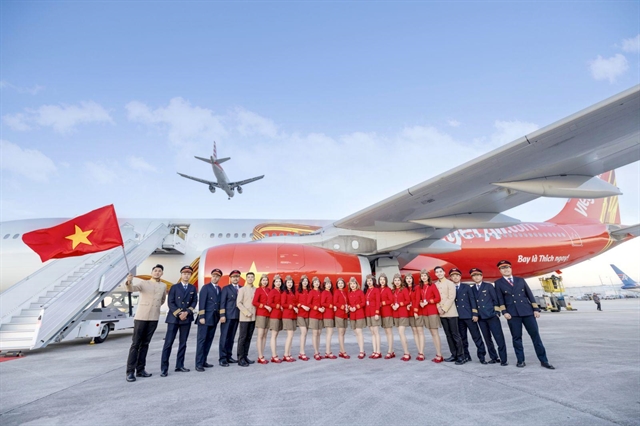
A master plan to exploit the tourism potential of the Đồng Văn Karst Plateau Geopark will highlight its lesser known facets, but concerns remain over its social and environmental impacts.
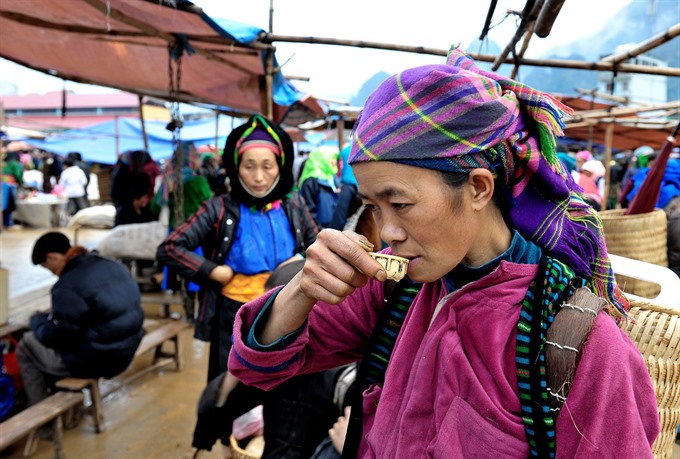 |
| Colourful: A local woman tastes rice wine at Đồng Văn Market. VNA/VNS Photo Thanh Hà |
Compiled by Thiên Hương
The Đồng Văn Karst Plateau has unique limestone vistas not found anywhere else in the country. This has made it an exotic destination attracting increasing numbers of visitors.
However plans by the Ministry of Culture, Sports and Tourism to exploit the area’s attractions could eventually destroy the beauty and nature of the region. One of the criteria to become a national tourism site is that the location has to have at least a million tourists per year.
Local and central governments are keen to exploit the plateau’s tourism potential. A long term development plan under a recent prime ministerial decision envisages the Đồng Văn Karst Plateau becoming a National Tourism Site by 2025 and attracting 1.1 million visitors by 2030 for annual revenues of VNĐ5,000 billion (US$219 million).
The geopark, at 1,400 -1,600 metres above sea level, covers the districts of Mèo Vạc, Đồng Văn, Yên Minh and Quản Bạ in Hà Giang Province, which shares a long border with China.
The Global Geopark Network website says that the plateau is 80 per cent limestone and home to many fossils of creatures going back 400-600 million years.
The park is situated in a temperate climate and has two seasons: rainy and dry.
The annual mean temperature is 24-28 degrees Celsius, while the winter temperatures can drop to five degrees.
The Đồng Văn rocky highlands became the 77th member of the Global Geopark Network on October 3, 2010 -- the first in Việt Nam and the second in Southeast Asia.
Preliminary scientific evaluations list 45 geomorphic heritages, 33 tectonic heritages and numerous fossils in the sediment stone stratums of the geopark. Several hundred breeds and species of fauna and flora have been found here, many of them carry a geographical identification tag of the province, Hà Giang.
Many geoheritages in the area have received national and international recognition, including the system of fault valleys in the Nho Quế River, the Tu San canon, the Mã Pí Lèng pass, the folds in calcareous karst in Mã Pí Lèng, Quản Bạ and other places
Apart from the geoheritages, biological diversity and fossils, the plateau is also home to 17 ethnic communities whose traditions need to be preserved and promoted.
In fact, it can be said that the Đồng Văn Karst Plateau carries a unique combination of geo and cultural heritages.
The master plan proposes several typical tourism products: a day with a local ethnic minority person; a visit to the Khâu Vai Love Market, which is a special meeting point for ex-lovers gathering once a year on the 27th day of the third lunar month; a day at the mansion of the “King of the Ethnic Mông”, Vương Chính Đức (1865-1947), an architectural masterpiece of stone and wood; a day working on terraced rice fields with the Mông in Mèo Vạc District; and a walk along a pedestrian street in Đồng Văn Town - plus balloon rides over the valleys.
Experts have identified some features that need special attention, one of which is the diversity of ethnic groups.
“Although the Mông people account for most of the population in the locality, there are 17 groups here,” said Trần Tân Văn, rector of the Việt Nam Institute of Geosciences and Mineral Resources under the Ministry of Nature Resources and Environment.
“We cannot consider the Mông’s culture as the background for tourism products and ignore other groups.”
He also stressed the need to preserve all facets of ethnic cultures and care taken not to disrupt their traditions.
“A modern building built in Lô Lô Chải Village, Lũng Cú Commune, had broken the traditional space of the Lô Lô group. However, a tourism project supported by the Japanese government has encouraged locals to keep their traditional houses.”
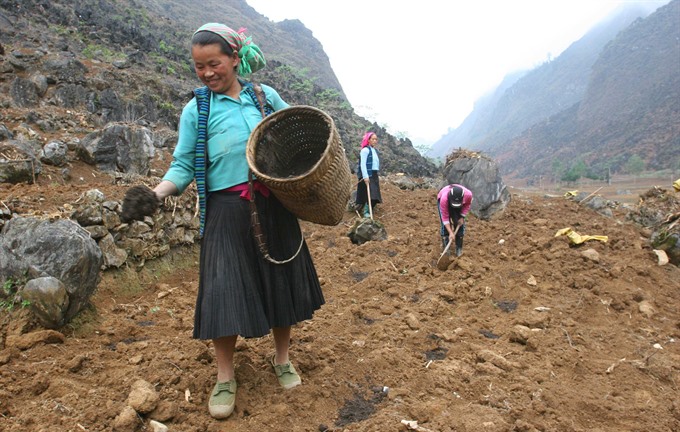 |
| Old lifestyles: Farmers work on field on Hà Giang Karst Plateau. VNS Photo Trương Vị |
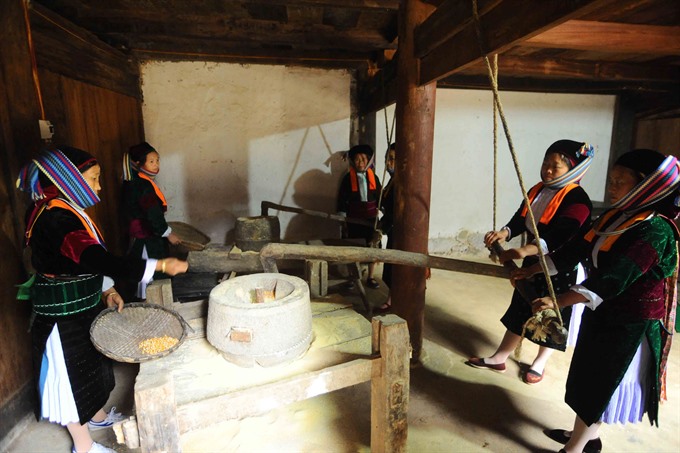 |
| Tradition: Women grind maize. VNA/VNS Photo Minh Đức |
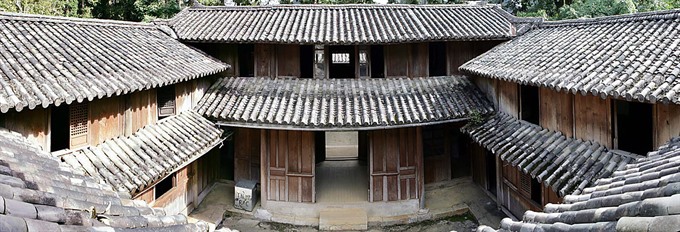 |
| Attraction: The mansion of “King of Mông Ethnic People,” Vương Chính Đức. VNA/VNS Photo Thanh Tùng |
Văn said local cultures should be introduced to visitors in diverse ways, recognising and highlighting distinctive features.
“For example, local farmers have adapted to the lack of water. In the driest areas, people still find ways to cultivate crops and rear cattle,” he said.
“We can exploit this feature for tourism, which has not been mentioned in the master plan,” he said.
Overkill concerns
Phạm Trung Lương, former deputy rector of Tourism Research Institute under the Ministry of Culture, Sports and Tourism, said one of the criteria to become a national tourism site is that the location has at least a million tourists per year.
“I’m thinking of the locality’s capacity to receive one million visitors, in terms of ecology and culture (the disruptions such a huge influx can cause),” he said, “The site is big but visitors will tend to flock to some destinations.”
Nguyễn Công Hoan, deputy director of the Hanoi Red Tours Company, said that while the spectacular karst plateau would certainly attract tourists interested in both landscapes and cultures, care should be taken to avoid overcrowding.
“There are only few destinations for tourists on the karst plateau, including Vương’s mansion.
Hoan said the park management board should ask travel agencies not to put too many tourists in a vehicle.
For example, the company ensures that each tourist is able to sit next to the window, so that they can see the scenery outside while listening to the tour guide.
Both Hoan and Văn suggested that tourism should not be passive and wait for the tam giác mạch (buckwheat) flower season to attract visitors to the site.
“We should promote other values of the park,” Hoan said.
The park management board has asked district authorities to control and protect heritage sites with the help of ethnic groups.
Văn warned against projects that could adversely affect natural destinations, like the Lùng Khúy Cave in Quản Bạ District, and the Mây Tả Lủng and Lũng Lù caves in Đồng Văn District.
“Bringing tourists here has increased the risk of destroying the ecosystem inside the caves,” he said. — VNS




